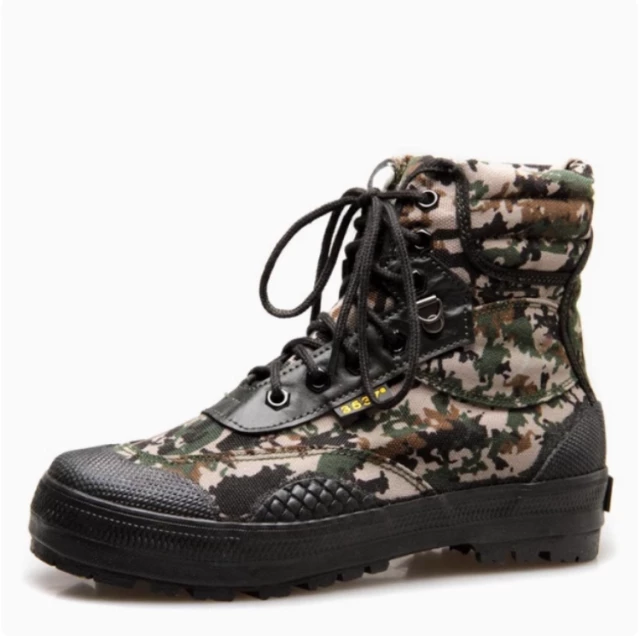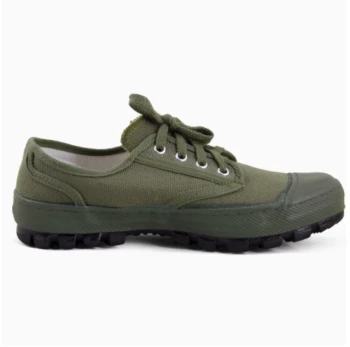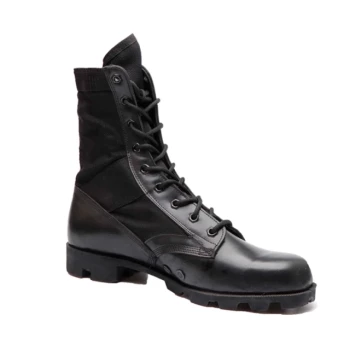World War II wasn't just a conflict of armies—it was a laboratory for innovation. The war's unprecedented scale forced rapid advancements in camouflage, transforming rudimentary concealment into a science of survival. This article explores how engineers and soldiers collaborated to create environment-specific patterns, mass-producible materials, and tactical doctrines that still influence design today.
The Evolution of Camouflage in WWII
Pre-War Foundations and Wartime Urgency
Before WWII, military camouflage relied on static, one-size-fits-all approaches. The interwar period saw experiments like Germany's Buntfarbenanstrich (colorful paint) for tanks, but these were limited by:
- Material constraints: Early patterns used pigments that faded quickly.
- Doctrinal resistance: Many commanders viewed camouflage as secondary to firepower.
The war's outbreak changed everything. With aerial reconnaissance making concealment a matter of life or death, nations prioritized:
- Standardized production: Developing inks and fabrics that retained color under combat conditions.
- Modular designs: Reversible uniforms with desert/jungle patterns for theaters like North Africa and the Pacific.
Key innovation: The British "Denison smock" for paratroopers integrated irregular shapes to break up human silhouettes—a principle later adopted for urban sniping.
Printing Innovations: From Concept to Mass Production
WWII turned camouflage into an industrial-scale operation. Challenges included:
- Durability: Prints had to withstand mud, saltwater, and repeated washing.
- Speed: Factories needed to produce thousands of yards weekly.
Solutions emerged through:
- Screen printing: Allowed intricate patterns like the US "frogskin" to be applied quickly to cotton.
- Synthetic dyes: Enabled the USSR's Ameba pattern to resist fading in harsh winters.
A little-known fact: Camouflage nets woven from shredded burlap became critical for concealing artillery, proving that low-tech materials could achieve high-impact results.
Theater-Specific Patterns: Engineering for Jungle, Desert, and Snow
Jungle Environments
The Pacific theater demanded patterns that mimicked dense foliage. The Japanese Type 98 uniform used:
- Small, organic shapes in khaki and green.
- Asymmetry to avoid detection during movement.
Desert Warfare
North Africa's open terrain required:
- Broad, horizontal streaks (e.g., Germany's Afrika Korps tan-and-brown splits).
- Lightweight fabrics to prevent heat exhaustion.
Winter Operations
The Eastern Front inspired:
- Reversible white-over-gray parkas (Soviet Maskhalat).
- Snow covers for tanks using improvised materials like chalk paste.
Pro tip: Modern hunting gear borrows heavily from these WWII innovations, especially the use of disruptive coloration.
Legacy: Post-War Civilian and Military Applications
WWII's camouflage breakthroughs didn't retire with the troops. They evolved into:
- Fashion: From 1960s military surplus to high-end streetwear.
- Hunting gear: Brands like 3515 leverage WWII-derived patterns for outdoor footwear, ensuring hunters remain undetected.
- Digital camouflage: Pixelated designs (e.g., US Marine Corps MARPAT) stem from WWII research on visual perception.
Fun fact: The "dazzle" paint used on warships to confuse rangefinders inspired modern graphic design techniques.
Ready to Equip Your Team with Battle-Tested Gear?
Just as WWII armies relied on purpose-built camouflage, today's professionals need footwear engineered for their environment. 3515 manufactures specialized boots and shoes for distributors and brands, combining historical durability insights with modern materials. Whether supplying jungle trekkers or winter work crews, our production expertise ensures your clients get concealment and comfort—no matter the terrain.
Contact 3515 today to discuss bulk orders tailored to your operational needs.
Related Products
- Wholesale High-Traction Camo Boots - Custom Manufacturer for Brands
- Durable Canvas Work Shoes with Rubber Lug Sole | Wholesale Manufacturer
- Wholesale Customizable Safety Boots Durable & Protective Footwear Manufacturing
- Durable High-Traction Canvas Sneakers Wholesale & Custom Manufacturing
- Durable Mid-Cut Tactical Boots for Wholesale & Private Label
Related Articles
- How Vulcanized Rubber Boots Outperform Standard Footwear: Science and Practical Benefits
- How Vulcanized Soles Fall Short—And When to Choose Alternatives
- How Military Camouflage Boots Outperform: Engineering for Extreme Survival
- How Military Camouflage Boots Engineer Tactical Superiority: Design, Protection, and Endurance
- How Vulcanized Rubber Engineering Creates Unbeatable Outdoor Boots



















